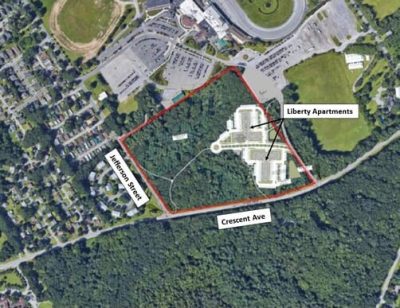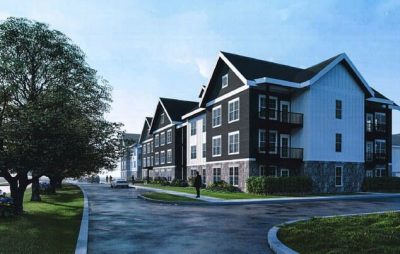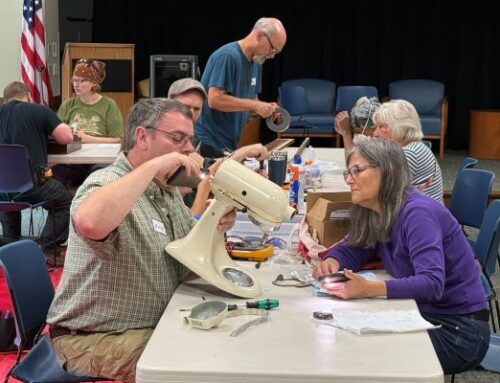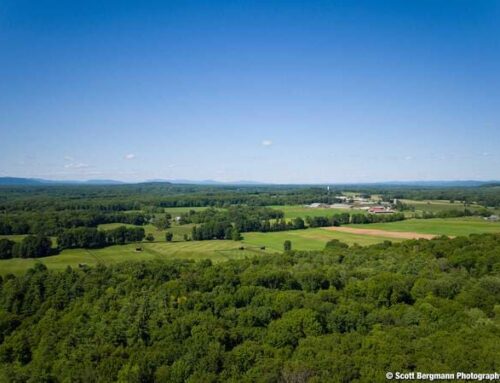On December 27, 2022, the Saratoga Springs City Council approved amendments to the city’s Comprehensive Plan and Unified Development Ordinance (UDO) to allow Liberty Affordable Housing, Inc. to construct two four-story buildings on a 30-acre parcel near the corner of Crescent and Jefferson Streets. The buildings will contain 215 studio, 1-bedroom, and 2-bedroom apartments targeting young professionals, with rents calculated to meet affordability standards.
Significant Issues
 Sustainable Saratoga strongly supports appropriate efforts to provide more affordable and economically diverse housing in the city. A new development like the Liberty project, which provides lower-cost housing with the support of government grants, is one approach to serve a growing need. But every project’s location, size, and character must conform with the city’s Comprehensive Plan and UDO. That is why, after our review of the Liberty project as first presented, we told the City Council about significant issues, including the applicant’s request to change the zoning of the proposed location – thereby greatly increasing the allowable building density, the project’s potential impacts on the environment, and the lack of important procedural steps.
Sustainable Saratoga strongly supports appropriate efforts to provide more affordable and economically diverse housing in the city. A new development like the Liberty project, which provides lower-cost housing with the support of government grants, is one approach to serve a growing need. But every project’s location, size, and character must conform with the city’s Comprehensive Plan and UDO. That is why, after our review of the Liberty project as first presented, we told the City Council about significant issues, including the applicant’s request to change the zoning of the proposed location – thereby greatly increasing the allowable building density, the project’s potential impacts on the environment, and the lack of important procedural steps.
This large wooded and undeveloped parcel is adjacent to the city’s Greenbelt and wooded state parkland. It contains more than 9 acres of protected wetlands. Most of the parcel’s designation by the Saratoga Springs Comprehensive Plan was “Residential Neighborhood-1,” intended to promote the character of a low-density single-family residential neighborhood. The parcel’s “Rural Residential” zoning designation in the UDO allows a maximum average density of one house for every 2 acres, and requires conservation design (the clustering of houses), which would protect a large portion of the parcel from development with a conservation easement. The Liberty proposal included a request to change the zoning to “Urban Residential 4,” which allows up to 14.5 residences per acre, a 29-fold increase. It did not address the need to amend the Comprehensive Plan to accommodate such a steep increase in density.
In our September 1, 2022 letter to the City Council, we pointed out that the proposal could not move forward without a significant Comprehensive Plan amendment. Also, if the proposed zoning change were adopted and the affordable housing project did not materialize, not only would the property be open to a substantial increase in residential density, but it would be available for a number of other uses having nothing to do with affordable housing. We noted that the project’s large multi-story apartment buildings should be sited closer to downtown in areas zoned for more intensive uses, and we expressed concern that the proposed size and density of the project could have negative impacts on the wetlands.
With Changes, a Better Project
 In the end, our concerns were acknowledged by the city planning board, the City Council, and the Liberty team, and our actions helped create a better project. The City Council approved the required Comprehensive Plan amendment. Approximately 20 of the parcel’s 30 acres, including the wetlands, will be protected from future development with a permanent conservation easement. The parcel’s new Comprehensive Plan and zoning designations will be restricted to an affordable housing project, which will be required to meet affordability standards for at least 30 years. We applaud the project’s green design elements, including energy efficiency, connection to public transit, dark-sky lighting, and reduced water consumption, which must be included to meet state funding requirements.
In the end, our concerns were acknowledged by the city planning board, the City Council, and the Liberty team, and our actions helped create a better project. The City Council approved the required Comprehensive Plan amendment. Approximately 20 of the parcel’s 30 acres, including the wetlands, will be protected from future development with a permanent conservation easement. The parcel’s new Comprehensive Plan and zoning designations will be restricted to an affordable housing project, which will be required to meet affordability standards for at least 30 years. We applaud the project’s green design elements, including energy efficiency, connection to public transit, dark-sky lighting, and reduced water consumption, which must be included to meet state funding requirements.
But it Required Extraordinary Comprehensive Plan and Zoning Amendments
The Liberty project will provide much-needed workforce housing within the city limits. However, we agree with the Planning Board’s admonition that these were extraordinary Comprehensive Plan and zoning amendments to accommodate a single project. Our current Comprehensive Plan, which lays out the city’s vision for future development, was hammered out after many meetings by a large committee appointed by the City Council. The planning process spanned many months and included substantial public participation. Changes to the Comprehensive Plan should only be made through the same process, involving the entire community in a comprehensive look at the future development and conservation policies of the entire city.
A Broader Approach to Affordable Housing
We advocate a broader approach to addressing Saratoga’s affordable housing needs. Large developments dedicated exclusively to workforce housing have the undesirable consequence of segregating the city by income, rather than integrating such housing into existing neighborhoods and new mixed-income developments. Many of them are no longer managed as affordable housing after their typically 30-year financing period. We continue to promote other options for more diverse and affordable housing, many of which have been adopted by other communities. For example, inclusionary zoning, which would incorporate affordable housing in every new development with 10 or more residences, is an effective way to ensure the steady growth of permanent affordable housing throughout the city. Because it is unlikely that simply building more housing will reduce housing costs in our popular resort community, we oppose efforts to increase building density in the Greenbelt. We must maintain the integrity of our Greenbelt and the “City in the Country” vision that is the foundation of Saratoga’s unique character and economic success.
Providing affordable housing in a thriving, attractive city such as ours is a daunting challenge. In the coming year, we will continue to seek and explore workable alternatives, and we hope to assist the City Council in developing a comprehensive affordable housing plan for Saratoga Springs.
Read more about Sustainable Saratoga’s position on affordable housing





